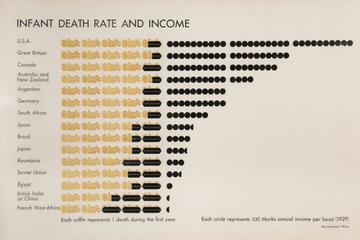Harmonic analyser, Mader's form, in fitted case, with planimeter, discs for 1-9 harmonic oscillations and drawing board
In 1909, the German engineer Otto Mader designed this form of harmonic analyser which was built by manufacturers Gebrüder Stärzl in Munich. As all harmonic analysers, it can analyse a curve harmonically which means that it can calculate mathematically a given curve’s periodicity. It was an easier to use and time saving analyser compared to previous examples. Its main advantages were that it could be used with any polar planimeter, and it could be applied to periodic curves of any base (a curve's base describes how 'curved' it is) unlike previous analysers that could only be applied to fixed base curves and so curves required re-drawing before being analysed. This analyser has 9 wheels and so it can calculate up to 9 frequencies. The more gears an instrument had the more detailed its analysis could be but such a feature would also make it more expensive.








